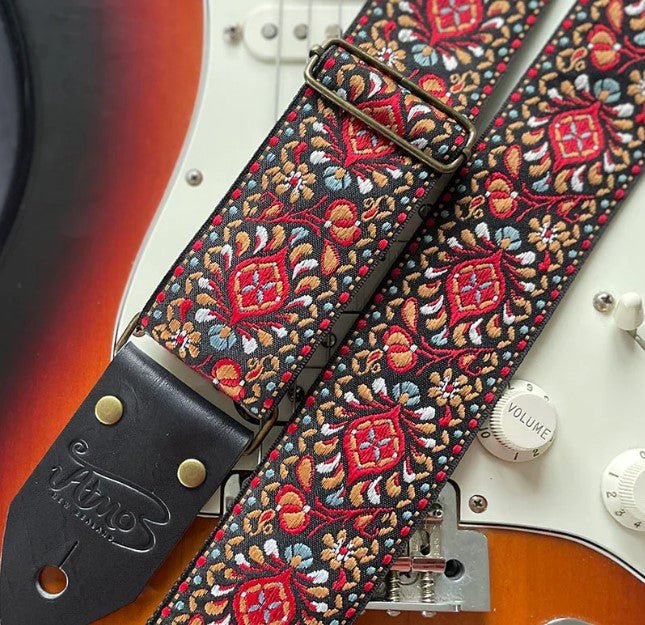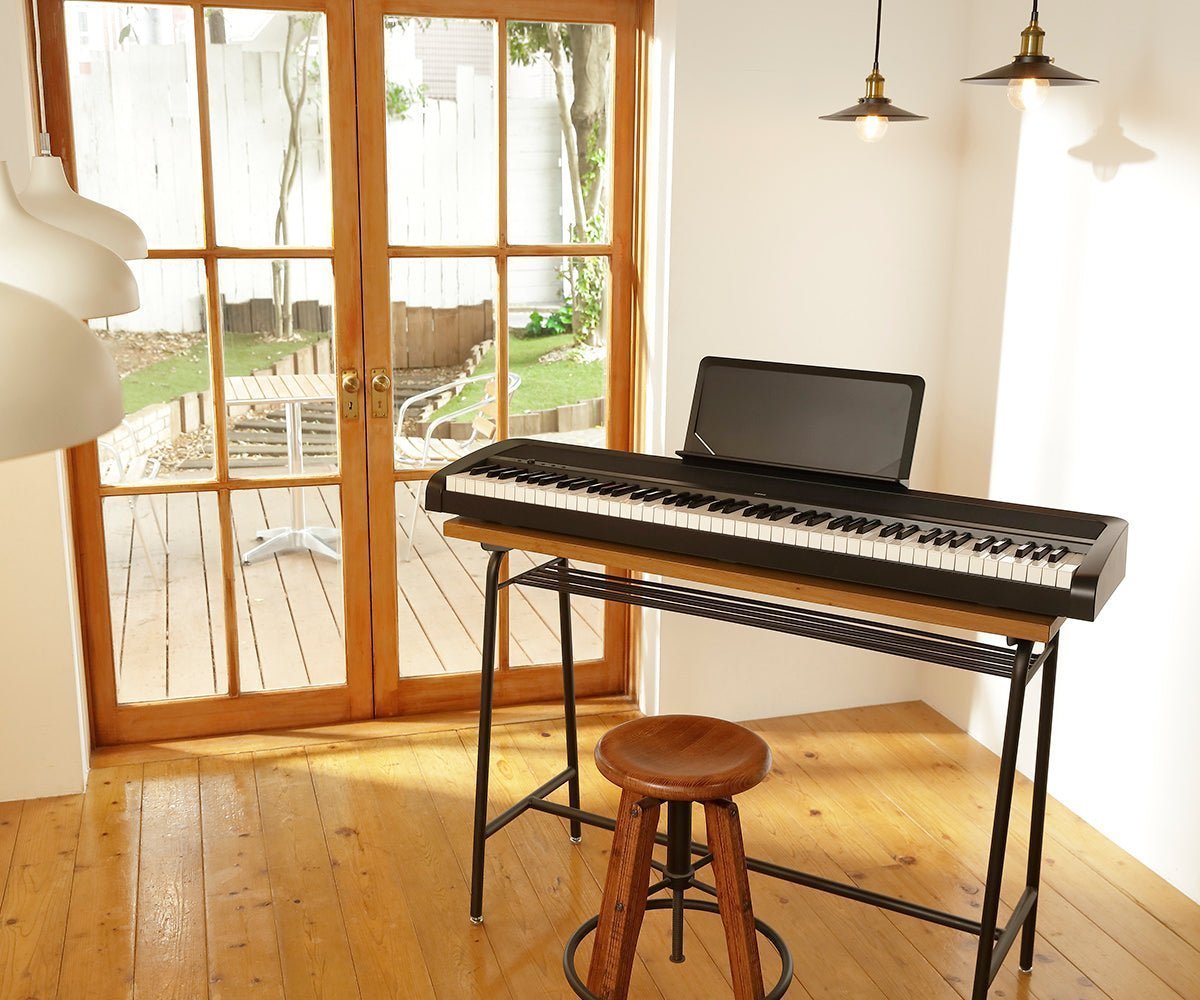Semi-Weighted vs. Weighted Keys: Choosing the Right Keyboard for You
In the realm of music production instruments, the tactile experience of the keyboard plays a significant role in shaping the sound and expression of your creations. One crucial aspect to consider is the action of the keys, a term that describes the mechanism that produces sound when a key is pressed. The two main types of keyboard actions that musicians usually find themselves choosing between are Semi-Weighted and Weighted keys. Both have their unique characteristics, offering differing levels of resistance and tactile feedback. Understanding the nuances between Semi-Weighted vs. Weighted keys can greatly influence the choice of keyboard that best suits your musical style and comfort.
Key Action
Let's delve deeper into what 'key action' actually means. The term hammer action refers to how the keys react to your touch, including their level of resistance and the sensation they provide as you press down. This reaction is crucial because it directly affects how you interact with your instrument, your playing speed, and the expressiveness of your music.
The key action can offer a more organic feel to your playing, giving you the sense of playing an acoustic piano, for example, or it can be lighter and faster, better suited to organ or synth-like performance.
Why does key action matter? The answer lies in the overall feel and playability of a keyboard. A keyboard's key action can greatly affect a player's ability to express musical ideas. For instance, a more responsive keyboard can facilitate faster, more precise playing, thus aiding in the rendition of complex musical pieces.
Conversely, a less responsive keyboard might hinder fast playing but may be ideal for beginners or those interested in more straightforward musical styles. Therefore, understanding and choosing the right key action becomes pivotal as it can significantly influence the comfort, speed, and expressive potential of your playing.
What are Semi-Weighted Keys?
Semi-Weighted Keys are a blend of the spring-loaded mechanism found in light, non-weighted keys, and the more substantial feel of fully-weighted keys. These keys have a springy action and a lighter weight, providing a balance that is comfortable to play.
Unlike weighted keys that mirror the heavy feel of an acoustic piano, semi-weighted keys are lighter and faster, making them an excellent choice for playing rapid sequences of notes. They're typically found on keyboards designed for organ or synth sounds, as well as digital piano such as on many stage pianos.
Semi-weighted keys strike a balance between the light touch of non-weighted keys and the resistance of weighted keys. They are designed with a spring action mechanism that provides a more touch sensitivity and a certain degree of resistance when pressed, mimicking to some extent the tactile feedback of an acoustic piano.
Advantages of Semi-Weighted Keys
The unique properties of semi-weighted keys bring a host of advantages to the table. Firstly, semi-weighted keys are universally adaptable, catering to a broad array of music genres. Whether you're playing fast tempo tracks, rhythmic beats, or slow melodic tunes, semi-weighted keys can handle them all with finesse. This is largely due to their well-calibrated balance between resistance and responsiveness, enabling musicians to experiment with different playing styles.
Another noteworthy advantage of semi weighted keyboards is their suitability for beginner and intermediate players. For those just starting their musical journey or those transitioning from non-weighted keys, semi-weighted keys offer a less daunting learning curve. They provide an ideal 'middle ground', offering enough resistance to mimic an acoustic piano, whilst still being forgiving enough for those yet to develop finger strength and technique.
Moreover, semi-weighted keys are an excellent choice for musicians who require long hours of practice or performance. Their lighter touch reduces the fatigue caused by the heavy resistance of fully-weighted keys, allowing musicians to play for extended periods comfortably.
What are Weighted Keys?
Weighted Keys are designed to mimic the heaviness of keys on an acoustic piano, thus providing a more authentic piano-playing experience. The keys are weighted with a mechanical system of levers, usually with a small, graded hammer. When a weighted key is pressed, this hammer strikes the string inside the piano, producing sound.
The resistance offered by the hammer system gives these keys their characteristic 'weight', and the full range of pressure required to press these keys varies, just like on an acoustic piano. The keys are typically heavier in the low end and lighter in the high end, which is a replication of the graduated feel in acoustic pianos.
Weighted keys have been engineered to closely hammer action keys that mimic the resistance and tactile feedback of an acoustic piano, delivering a more authentic playing experience. When you press a weighted key, you'll feel a resistance that closely mirrors the action of hammers and strings in an acoustic piano. This resistance, known as the weighted action, is created by a system of levers and weights inside the keyboard.
Advantages of Weighted Keys
Weighted keys offer several distinct advantages over digital pianos, especially for those who appreciate the feel and response of an acoustic piano. One of their primary benefits is the authentic piano-playing experience they offer. Thanks to the weighted mechanism, these keys replicate the resistance and rebound of a genuine piano, providing tactile feedback that closely mirrors playing on an acoustic instrument. This similarity enhances musicians' expressiveness, allowing them to translate their emotions into music with a greater level of nuance and depth.
Moreover, weighted keys facilitate the development of proper piano technique and finger strength. The graduated weight across the keyboard simulates the varying tension of real acoustic piano and strings, enabling players to build the finger strength and agility needed for an acoustic piano. For serious piano students, this can be particularly beneficial in preparing them for performances on full-size pianos.
Additionally, the dynamic response of weighted keys provides a more nuanced control over volume and tone than acoustic piano feel. The force with which a key is struck directly affects the resulting sound, enabling musicians to experiment with different degrees of touch and pressure, thereby adding to the richness and expressiveness of their performances.
Comparison
Characteristic
Key Resistance
Key Response
Suitable for
Portability
Similarity to Pianos
Playing Style
Price Range
Semi-Weighted Keys
Moderate resistance
Medium sensitivity
Versatile (Various genres)
Lightweight and portable
Closer to synth-action keys
Well-suited for synth and MIDI
Generally more affordable
Weighted Keys
Heavier resistance
Graduated sensitivity
Pianists and piano enthusiasts
Heavier, less portable
Closest to acoustic pianos
Ideal for classical and pianists
Can be more expensive
Choosing the Right Keyboard for You
When deciding between semi-weighted and weighted keys, it's crucial to consider your own needs, preferences, and musical goals. If you're a beginner or a musician who frequently travels, you might appreciate the difference in the lightness and portability of a semi-weighted keyboard.
These keyboards are also versatile, catering to various music genres and styles. However, they don't fully replicate the feel of an acoustic piano and offer limited expressiveness, features that might be a concern if you're seeking a traditional piano-playing experience.
On the other hand, weighted keyboards provide an authentic grand piano full-playing feel, with dynamic response that enables nuanced playing. They're ideal for serious piano students and professional pianists, or anyone intending to transition to an acoustic piano. However, they're heavier, possibly requiring more maintenance, and the need to exert more pressure can cause fatigue during extended periods of playing.
Conclusion
Ultimately, the choice between semi-weighted and weighted keys is deeply personal. It's recommended to try out both types of weighted keyboards first, if possible, to see which one feels more comfortable and suits your playing style best. Remember, the goal is to choose a keyboard that aids in your musical journey, helping you express your creativity and enjoy your practice sessions.
People Also Read
Frequently Asked Questions
Have a Question? We’ve Got the Answer!



